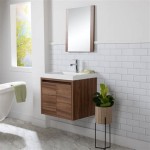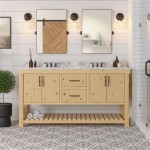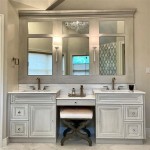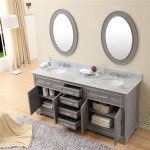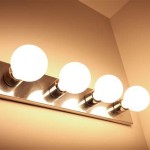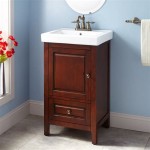The Enduring Appeal of Vanity Lights On Side Of Mirror
Vanity lighting positioned on either side of a mirror represents a well-established approach to illuminating the face for grooming, makeup application, and other personal care routines. This configuration, prevalent in bathrooms, dressing rooms, and professional studios, offers distinct advantages over alternative lighting schemes.
The strategic placement of lights flanking the mirror is designed to minimize shadows and provide a more even distribution of light across the face. This, in turn, contributes to a clearer and more accurate representation of one's appearance, which is crucial for tasks requiring precision and attention to detail.
This article explores the core benefits, technical considerations, design variations, and practical applications of vanity lights installed on either side of a mirror. It aims to provide a comprehensive overview of this lighting solution for homeowners, interior designers, and anyone seeking to optimize their personal grooming space.
Minimizing Shadows for Optimal Illumination
The primary justification for placing vanity lights on the sides of a mirror lies in the reduction of shadows. When a single light source is positioned above the mirror, it casts downward shadows under the brow, nose, and chin. These shadows can distort facial features and hinder the accurate application of makeup or the execution of grooming tasks.
By utilizing two or more light sources situated on either side of the mirror, light is directed onto the face from multiple angles. This cross-illumination effectively fills in shadows, creating a flatter and more uniform lighting environment. Consequently, the user is able to see their face more clearly and identify subtle imperfections or areas requiring attention.
The positioning of the lights is critical to achieving optimal shadow reduction. Ideally, the lights should be placed at approximately eye level or slightly above, and spaced evenly on either side of the mirror. The distance between the lights and the mirror, as well as the angle at which they are aimed, can also be adjusted to fine-tune the illumination and minimize unwanted shadows.
The efficacy of side-mounted vanity lights in shadow reduction is particularly apparent when compared to overhead lighting alone. While overhead lighting may provide general ambient illumination, it often fails to adequately light the face for detailed tasks. Side lighting, in contrast, is specifically designed to address this need and deliver targeted, shadow-free illumination.
Furthermore, the use of dimmable vanity lights allows for further customization of the lighting environment. Users can adjust the brightness of the lights to suit their individual preferences and the specific task at hand. This level of control is especially beneficial for makeup application, where varying light levels can be used to simulate different lighting conditions and ensure a consistent and natural-looking result.
Technical Considerations: Bulb Selection and Color Rendering
The selection of light bulbs is a crucial aspect of designing an effective vanity lighting system. Several factors should be considered, including the type of bulb, its color temperature, its lumen output, and its color rendering index (CRI).
Different types of light bulbs, such as incandescent, halogen, LED, and fluorescent, offer varying levels of energy efficiency, lifespan, and light quality. LED bulbs are generally considered the most energy-efficient option, while halogen bulbs provide a warm, natural light that is often preferred for makeup application. The choice of bulb type will depend on the user's priorities and preferences.
Color temperature, measured in Kelvin (K), describes the warmth or coolness of the light emitted by a bulb. Lower color temperatures (e.g., 2700K) produce a warm, yellowish light, while higher color temperatures (e.g., 5000K) produce a cool, bluish-white light. For vanity lighting, a color temperature in the range of 3000K to 4000K is generally recommended, as it provides a balanced and flattering light that mimics natural daylight.
Lumen output measures the total amount of light emitted by a bulb. The appropriate lumen output for vanity lights will depend on the size of the mirror, the distance between the lights and the face, and the desired level of brightness. A general guideline is to aim for a total lumen output of around 400 to 800 lumens per light fixture.
The color rendering index (CRI) measures the ability of a light source to accurately reproduce colors compared to natural daylight. A CRI of 80 or higher is generally recommended for vanity lighting, as it ensures that colors are rendered accurately and naturally. This is particularly important for makeup application, where accurate color perception is essential.
Proper bulb selection is not merely about aesthetics; it directly impacts the user's ability to perform tasks accurately and effectively. Poor color rendering, for instance, can lead to misapplication of makeup, resulting in an unnatural or unflattering appearance. Therefore, careful consideration should be given to the technical specifications of light bulbs when designing a vanity lighting system.
Design Variations and Style Integration
Vanity lights positioned on the sides of a mirror come in a wide array of designs and styles, allowing for seamless integration with various bathroom or dressing room aesthetics. From sleek and modern designs to more traditional and ornate options, there is a vanity light style to suit every taste.
One popular design option is the linear vanity light, which features a long, horizontal fixture that spans the width of the mirror. These lights often incorporate multiple bulbs or integrated LED strips to provide even illumination. Linear vanity lights are well-suited for minimalist and contemporary bathrooms.
Another common design is the sconce, which consists of individual light fixtures mounted on the wall on either side of the mirror. Sconces can be used to create a more traditional or eclectic look. They offer greater flexibility in terms of placement and can be adjusted to fine-tune the lighting according to individual preferences.
Vanity lights can also be integrated directly into the mirror itself. These integrated vanity mirrors feature LEDs or other light sources embedded within the glass, providing a streamlined and modern aesthetic. Integrated vanity mirrors are a space-saving option that is particularly well-suited for smaller bathrooms.
The material and finish of the vanity lights can also contribute to the overall design aesthetic. Chrome, brushed nickel, and matte black are all popular finishes that can complement a variety of bathroom styles. Glass shades can be used to diffuse the light and create a softer, more ambient glow.
Furthermore, smart home technology offers the ability to control vanity lights remotely, adjust their brightness and color temperature via mobile applications, and integrate them with other smart home devices. This level of control provides added convenience and customization options.
Regardless of the specific design chosen, it is important to ensure that the vanity lights are installed in accordance with local electrical codes and safety regulations. Professional installation is recommended to ensure proper wiring and safe operation.
Ultimately, the design of vanity lights positioned on the sides of a mirror should be carefully considered in relation to the overall design of the bathroom or dressing room. By selecting lights that complement the existing décor and architectural style, it is possible to create a cohesive and visually appealing space.
The correct placement is also key. The center of the light fixture should align approximately with the eyes of the individual using the vanity. This placement, combined with even spacing on either side of the mirror, maximizes shadow reduction and provides the most flattering and functional light.
The size of the mirror also factors into the equation. A larger mirror may require larger, more powerful light fixtures to adequately illuminate the face. Conversely, a smaller mirror may only require smaller, less powerful lights.
Beyond the purely functional aspects of vanity lighting, the design can also contribute to the overall ambiance of the room. Softer lighting, for instance, can create a more relaxing and spa-like atmosphere, while brighter lighting can create a more energizing and invigorating atmosphere.
Finally, the accessibility of the light switch or dimmer control should be considered. The switch should be easily accessible and located in a convenient location, such as near the mirror or the entrance to the bathroom.

25 Amazing Bathroom Light Ideas

Best Bathroom Vanity Lighting Lightology

How To Get Your Bathroom Vanity Lighting Right

Vanity Lighting Ing Guide The Home

Best Bathroom Vanity Lighting Lightology

Chiswick Vanity Light

How To Get Your Bathroom Vanity Lighting Right

Gednbo Dimmable Led Bathroom Vanity Lights 360 Full Lighting Light Fixtures Over Mirror Bar Modern Wall Sconce 4000k For Bedroom Living Room Chrome 30 Inch Yahoo Ping

Bathroom Lighting Top 10 Styles Reviewed And Rated Hometone Home Automation S Guide

Vanity Light Height The Home
